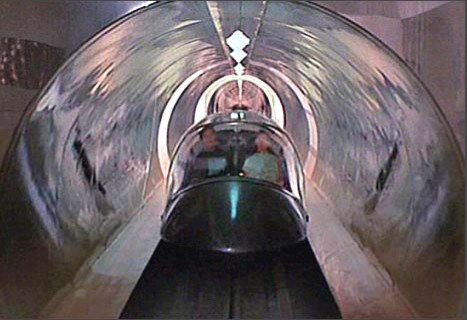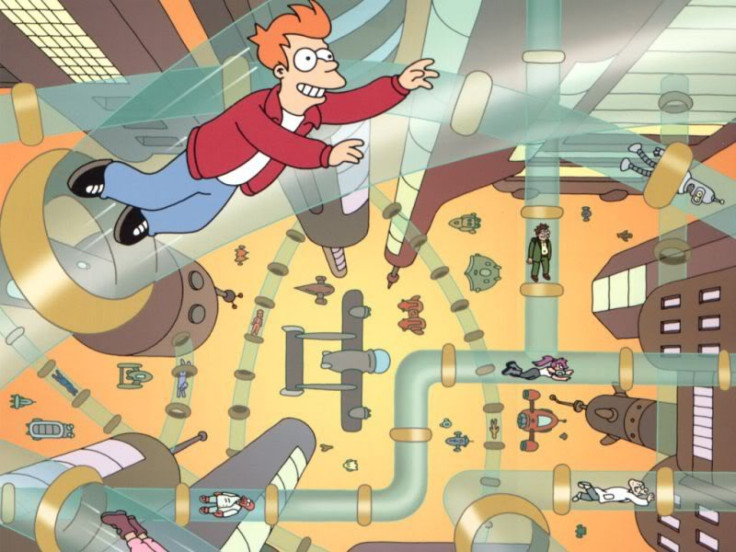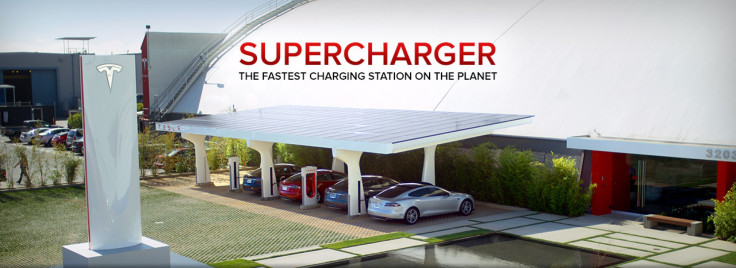Top 5 Things The Hyperloop Might Look Like: Tesla Founder Elon Musk To Unveil High-Speed Tranport Plans In August
Elon Musk, founder of Tesla Motors (NASDAQ:TSLA) and SpaceX, said in a tweet that he plans to unveil the design behind the Hyperloop by Aug. 12.
The long-awaited “fifth mode of transportation” has been described by Musk as an alternative to trains, planes, automobiles and boats that looks like a "cross between a Concorde and a railgun and an air hockey table." Musk told PandoDaily that the Hyperloop will “never crash, is immune to weather, it goes 3 or 4 times faster than the bullet train.”
Here is a look at five different aspects of the past, present and future of alternative transport systems in an attempt to uncover just where Musk might be headed.
1.) 1870, The Beach Pneumatic Subway, New York City
Alfred Ely Beach began construction on a pneumatic subway line in New York City beneath Broadway in 1869. His “Beach Pneumatic Transit Company” completed the project the following year, running a single car on a track from Warren Street to Murray Street to demonstrate a pneumatic transit system and donating all proceeds from the project to charity.
In a pneumatic tube, capsules are transported through a tube network through a vacuum or pushed by compressed air. NYC’s Pneumatic Subway utilized a 50 ton fan that blew the car through the subway tunnel, with the blades reversing course to bring the car back. The Hyperloop will operate above ground, but Beach's pneumatic subway shows just how long mankind has looked for new and alternative modes of transport. Joseph Brennan, an engineer working for Columbia University, wrote an in-depth piece about Beach Pneumatic that you can access here.

2.) 2274 - Logan’s Run, Washington, D.C.
In the 1976 film “Logan’s Run,” the title character utilizes a pod car that traverses a series of tubes to travel around the dystopian domed city where everyone lives (until their 30th birthday, that is). Since the “Bullet Train” http://en.wikipedia.org/wiki/Shinkansen has a high speed of about 149-199 mph, the Hyperloop will shoot for about 750-1,000 mph, and therefore be much faster than the “Logan’s Run” pod cars.

3.) 2999 - “Futurama” Tube Transport System, New York City
The New York City envisioned by the animated television show “Futurama” has replaced its underground subway with a Tube Transport System. The tubes look pneumatic, but how they function is not explained in the show. Like the Tube Transport System, Hyperloop will likely be enclosed, since Musk said that it will not be affected by weather.

4.) Evacuated Tube Transport Technologies (ET3)
The ET3 is a patent for a possible technology where passenger capsules the size of a normal car travel along a magnetically levitated track through an air-locked tube. The Los Angeles Times reported that Musk has said the Hyperloop will not function exactly as a maglev through a vacuum tube, like ET3 does.

5.) 2013 – Tesla Supercharger Network, Tesla Motors, Fremont, Calif.
Tesla founder Elon Muska said that the Hyperloop could power itself “if you put solar panels on it” because doing so would “generate more power than you would consume in the system.” The solar technology developed at Tesla Motors for the company’s Supercharger Network would be a likely candidate for powering the Hyperloop.
As Elon Musk has said, “There is a way to store the power so it would run 24/7 without using batteries. Yes, this is possible, absolutely.”
© Copyright IBTimes 2024. All rights reserved.





















